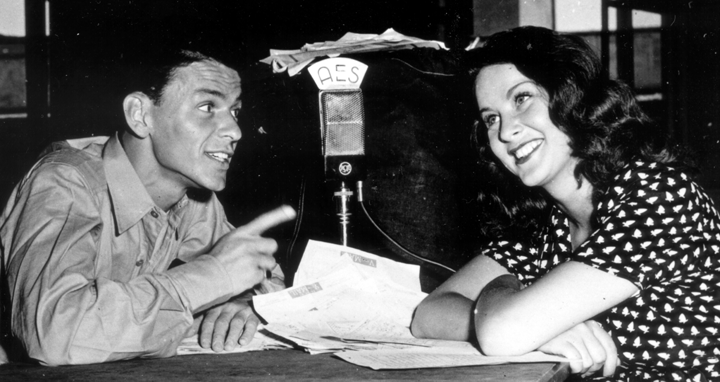Stay in the Loop
BSR publishes on a weekly schedule, with an email newsletter every Wednesday and Thursday morning. There’s no paywall, and subscribing is always free.
It was a very good life
Frank Sinatra: An appreciation

Frank Sinatra was born in 1915 — December 12, 1915 to be exact, just at the beginning of a revolution. Before the 20th century, popular entertainment was restricted to live performances that could reach only the number of people who could fit into a given venue at any one time.
The 20th century brought with it a technological revolution. Suddenly, there were new media — sound recording, radio, movies, and then TV — that enabled performers to become national celebrities, reaching millions of people.
Sinatra was born to make music using the latest media to bring his performances to the masses. Like all great artists, he was consumed by an ambition that knew no bounds — after mastering the media of his time, he went on to transform them into something no one could have imagined.
Never enough
As a struggling young singer in the midst of the Great Depression, he joined a vocal quartet that won the Major Bowes Amateur Hour (the American Idol of its day), but that wasn’t enough for him, so he left it and joined the Harry James Band. That wasn’t enough either, so he signed up to be the lead singer of the “General Motors of the Band Business,” the Tommy Dorsey Band. Of course, that wasn’t enough, so he left Dorsey at the height of his fame as a band singer and went on his own. He was the most popular singer in America, but that wasn’t enough, so he went to Hollywood and became a movie star, then went on radio and, along with Bing Crosby, became one of only two entertainers to sell millions of records, make hit movies, and have popular radio shows, all at the same time.
And then it all went boom. The public stopped buying his records, going to his movies, and listening to his radio show.
His record company, Columbia, dropped him; so did his movie studio, MGM, and the radio networks. He was married to one of the most beautiful women in the world, Ava Gardner, and then she dropped him too.
Boom, bust, boom
But then Sinatra made the most famous comeback in show business history — not a surprise to those who knew music. Sinatra could sing like nobody ever has. Even when his records weren’t selling, he was singing at a level that very few others have achieved. Just as importantly, he was insisting on performing with the best musicians and singing the best material (listen to his last recording with Columbia before that label dropped him). Sure, there were a few dogs along the way — even some barking dogs — but in a career spanning almost six decades, Sinatra made record after record that broke new ground or reached the summit of its kind of music, the music of the Great American Songbook.
People have strong opinions about Sinatra, just as he had strong opinions about everything, and he used the megaphone that fame gave him to tell people what he thought. His first Oscar was for a short film he made in 1943 about prejudice, The House I Live In. Unlike other performers who tried to keep their private lives away from the public, he sang songs that mirrored his life, like the album he made for his 50th birthday, September of My Years, about aging, and the Grammy-winning folk song he recorded for it — “It Was A Very Good Year” (the linked video is from the actual recording session shown on a CBS 50th Birthday interview in 1965. Notice an unusual fact: He always had an audience at his recording sessions.)
Sinatra’s true medium
This year will see a flurry of Sinatra tributes and retrospectives, including an HBO documentary, All or Nothing at All (BSR review), tribute concerts all over the world, and a host of other commemorations — even a free Sinatra 100 app that contains information about most of the celebrations. Philly Pops will be doing its tribute in October. Most of the documentaries or tributes I have seen have difficulty in capturing Sinatra, the artist. Maybe that’s because it’s impossible to capture the human heart, Sinatra’s true medium.
A few years ago, I was going through some difficult times. A song Sinatra recorded over 40 years ago became very special to me. The song is about finding your way when you are lost in a deep dark wood without a clue as to where to turn. It was not a popular song; in fact, no one else ever recorded it. Then, earlier this year, of all singers, Bob Dylan recorded it along with a bunch of other songs of Sinatra on his album, Shadows in the Night. The song is “Stay with Me” — here’s the original Sinatra version.
I know that whatever music becomes in the future, there will always be a place for Sinatra, a singer who has recorded songs for every season of the heart: the exhilarating joy of having the world on a string and the unfathomable sorrow of the blues in the night, the sweet memories of an April in Paris, and the bitter regret of the night we called it a day. He put his heart and all the artistry at his command into every song. No matter how popular the song, he sang it in a way no one ever has — or will. His way.
Sign up for our newsletter
All of the week's new articles, all in one place. Sign up for the free weekly BSR newsletters, and don't miss a conversation.

 Armen Pandola
Armen Pandola